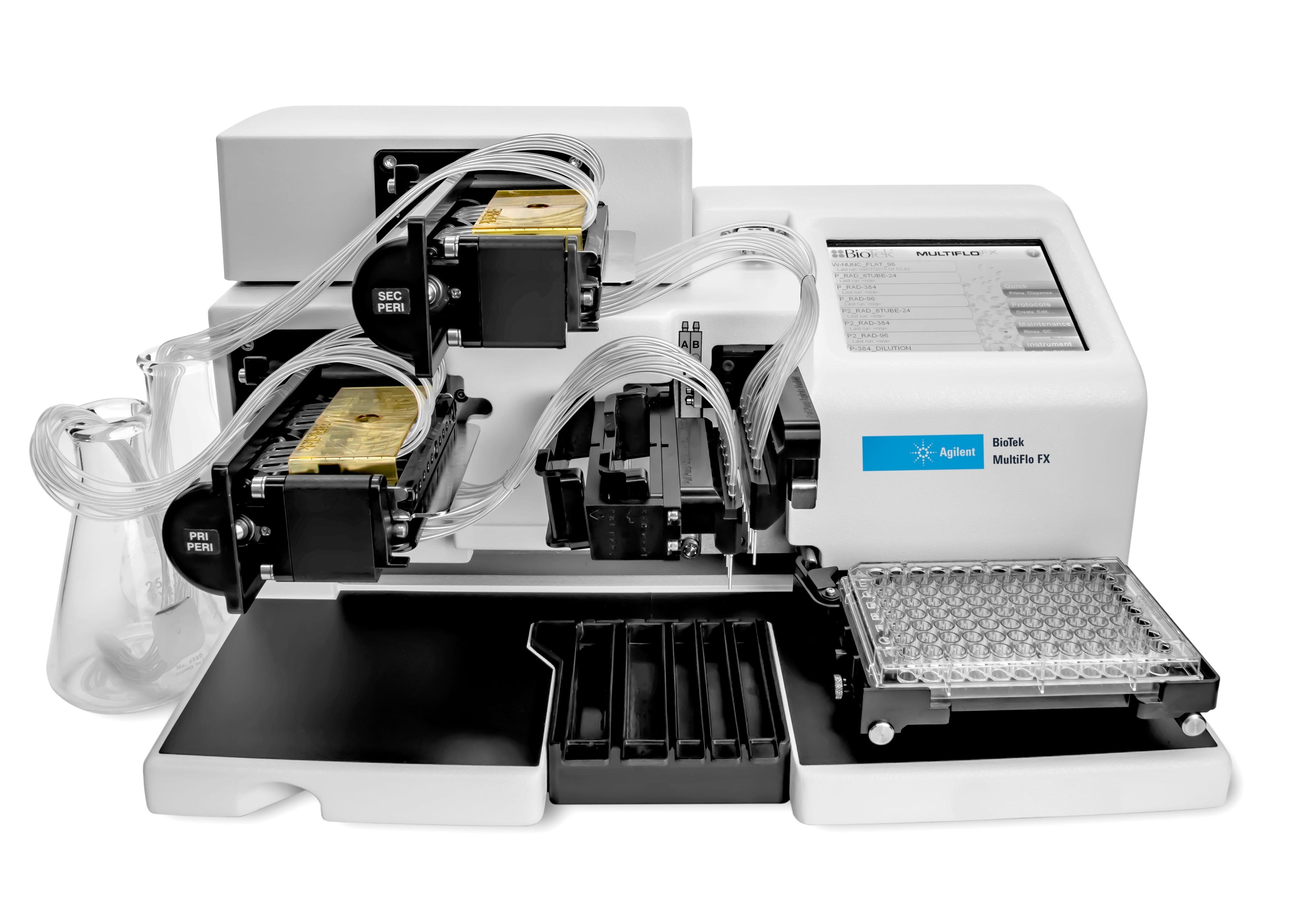New 1-to-4 Reagent MultiFlo™ Microplate Dispenser Simplifies Dispensing Processes
21 Sept 2010BioTek's new MultiFlo™ Microplate Dispenser uses multiple technologies to dispense multiple reagents into multiple microplate types. This all-in-one dispenser saves bench space and transfer time, and also eliminates plate setup steps, thus simplifying the dispensing process.
The MultiFlo dispenses up to four independent, parallel reagents in volumes from 1 µL to 3 mL, and microplates from 6- to 1536-well, including low-profile, standard height, deep well and even microtubes. Two integrated peristaltic pumps provide low prime volumes, full reagent recovery and high chemical compatibility, while two integrated syringe pumps feature program-and-forget solutions without need for instrument recalibration or consumables. Fully modular architecture means that any dispensing combination may be chosen and upgraded as necessary.
Dispense flow rates are fully adjustable from high-velocity media exchanges to gentle washing for delicate cell-based applications. Dispense protocols may be created and run through the easy-to-use keypad interface or through BioTek’s LHC™ Software. Additionally, with a compact footprint and 8-inch base height, MultiFlo easily fits on any laboratory bench or robotic system. Combined with BioTek's BioStack™ Microplate Stacker, MultiFlo may be programmed for unattended dispensing of up to 75 microplates.
"Microplate-based bulk dispensing can be complex, especially in an automated system," notes Jason Greene, BioTek Product Manager. "We specifically designed MultiFlo to streamline this process, providing more value through multi-tasking, and time savings."
BioTek Instruments, Inc., headquartered in Winooski, VT, USA, is a worldwide leader in the design, manufacture, and sale of microplate instrumentation and software. BioTek instrumentation is used to aid in the advancement of life science research, facilitate the drug discovery process and to enable cost-effective quantification of disease relevant molecules in the clinic.


